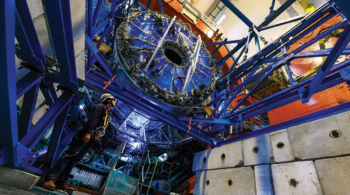 Read article 'The search for leptonic CP violation'
Read article 'The search for leptonic CP violation'
The search for leptonic CP violation
Boris Kayser explains how neutrino physicists are now closing in on a crucial piece of evidence on the origin of the matter–antimatter asymmetry observed in the Universe.











